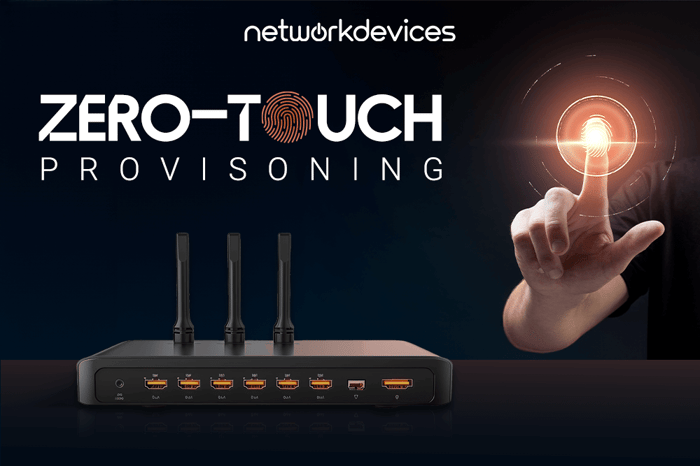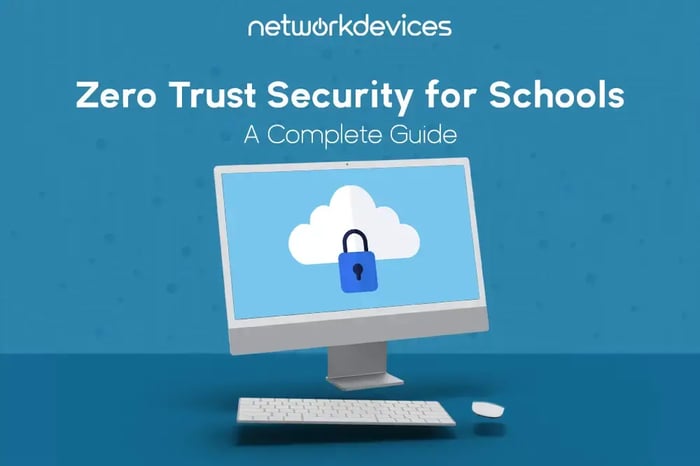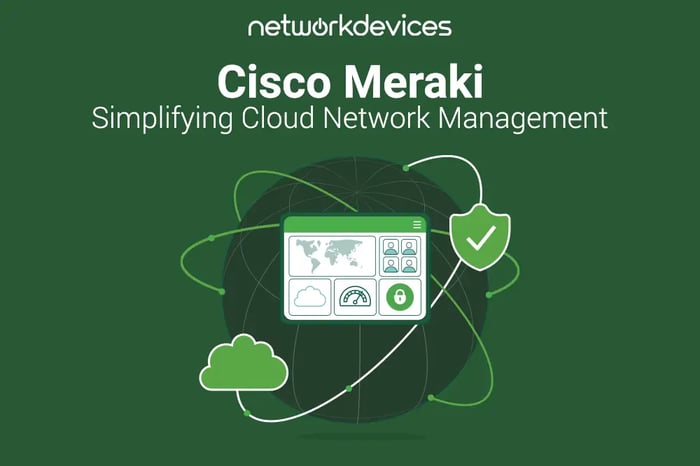You have no items in your shopping cart.

Zero-Touch Provisioning (ZTP): Streamline Network Deployment
SDN and SD-WAN: The Foundations of ZTP
The Role of ZTP in Network Automation
What is the Role of ZTP in SDN and SD-WAN technologies?
Zero Touch Provisioning (ZTP) plays a crucial role in both SDN (Software-Defined Networking) and SD-WAN (Software-Defined Wide Area Network) environments by automating the initial provisioning and configuration of network devices. Here's how ZTP contributes to each:
ZTP in SDN: Simplifying Network Device Onboarding
In an SDN environment, ZTP automates the onboarding of new network devices into the domain of the SDN controller, such as switches, routers, or access points.
When a new device is connected to the network, it typically boots up with minimal configuration or none at all. ZTP allows the device to discover the SDN controller and establish communication automatically.
The SDN controller then pushes the necessary configuration settings, policies, and rules to the newly on-boarded device based on predefined templates or profiles.
ZTP helps streamline the deployment of SDN infrastructure, reducing the time and effort required for manual configuration and ensuring consistency across the network, significantly enhancing deployment efficiency.

ZTP in SD-WAN: Automating Branch Deployments
In an SD-WAN deployment, ZTP automates the provisioning and configuring of SD-WAN edge devices, such as routers or appliances, at branch locations.
When a new branch office is set up, or a new WAN edge device is installed, ZTP allows the device to connect automatically to the SD-WAN orchestrator or controller.
The SD-WAN orchestrator pushes the device's appropriate configuration settings, policies, and routing rules, ensuring it integrates seamlessly into the SD-WAN overlay network.
ZTP enables rapid deployment and expansion of the SD-WAN infrastructure, simplifying network management and ensuring consistency in configuration across branch locations.
In both SDN and SD-WAN environments, ZTP enhances agility, scalability, and operational efficiency by automating the initial provisioning and configuration of network devices, reducing the need for manual intervention, and ensuring consistency and reliability in network deployments.
What are the Components of ZTP?
ZTP typically consists of several components that work together to automate the provisioning and configuration of network devices. These components may include:
1. Provisioning Server (The Central Hub): The provisioning server is a centralized system responsible for managing device configurations, templates, and profiles, crucial for automated provisioning.
2. Device Discovery Mechanism: ZTP relies on a device discovery mechanism for automatically finding newly connected network devices.
3. Bootstrapping Process (The First Steps to Automation): The bootstrapping process is a pivotal step in ZTP. When a new device is connected to the network, it initiates this process to obtain its initial configuration settings. This involves booting up with a minimal configuration or factory default settings and then contacting the provisioning server for further configuration.
4. Configuration Templates/Profiles: Configuration templates or profiles are the backbones of ZTP. They define the settings and parameters that must be applied to each type of network device. These templates specify IP addresses, VLAN configurations, routing protocols, security policies, and other network parameters, ensuring consistent and accurate device configurations.
5. Automated Configuration Deployment: Once the provisioning server discovers and authenticates a device, the appropriate configuration settings are pushed to it automatically, enabling network automation.
6. Validation and Verification Mechanisms: ZTP may include mechanisms for validating and verifying that devices are provisioned correctly and meet security and compliance requirements. This ensures that devices are configured accurately and securely before production.
By integrating these components, ZTP enables network administrators to automate the deployment and configuration of network devices, reducing manual effort, minimizing errors, and accelerating the provisioning process by using a provisioning server and configuration templates.
How Zero-Touch Provisioning Works: The Step-by-Step Process
ZTP works by automating network devices' provisioning and configuration process, enabling them to join the network and become operational with minimal manual intervention. Here's how ZTP typically works:

1. Device Initialization: When a new network device, such as a network switch, router, or access point, is powered on or connected to the network for the first time, it typically boots up with minimal configuration or factory default settings. This state prepares it for the zero-touch provisioning process, also known as day-zero configuration.
2. Discovery Phase: The device initiates a discovery process to locate the ZTP server or provisioning system on the network, leveraging the device discovery mechanism.
3. Authentication and Authorization: Once the device discovers the provisioning server, it may undergo an authentication and authorization process to ensure that it is authorized to participate in the provisioning process, thus enhancing security.
4. Configuration Retrieval: The device requests its initial configuration settings or day-zero configuration from the provisioning server, often retrieving files from a TFTP server during this process.
5. Configuration Application: The device applies the configuration settings received from the provisioning server, configuring its interfaces, protocols, and other network parameters accordingly, ensuring automated provisioning.
6. Validation and Verification: After applying the configuration settings, the device may undergo validation and verification checks to ensure it has been provisioned correctly and meets security and compliance requirements, ensuring network automation efficiency.
7. Operational State: Once the provisioning process is complete, the device enters its operational state and begins functioning as part of the network, fully configured and ready for use.
By automating these steps, ZTP enables network devices to join the network and become operational without manual configuration, reducing deployment time, minimizing errors, and improving overall network efficiency.
DHCP Server Options for ZTP: A Technical Overview
The specific DHCP server options used for ZTP depend on the specific requirements and capabilities of the ZTP implementation and the network infrastructure involved. However, some standard DHCP options used for ZTP include:

· Option 43 (Vendor-Specific Information): DHCP Option 43 is widely used for zero-touch provisioning to provide vendor-specific configuration information from DHCP servers to clients.
· Option 60 (Vendor Class Identifier): Option 60 is used to identify the DHCP client's vendor and configuration type. It helps DHCP servers differentiate between different types of DHCP clients, including those intended for ZTP provisioning.
· Option 66 (TFTP Server Name): Option 66 specifies the hostname or IP address of the TFTP (Trivial File Transfer Protocol) server, which is commonly used in ZTP environments to provide initial configuration files or boot images to clients during the bootstrapping process.
· Option 67 (Bootfile Name): Option 67 specifies the file name to be downloaded from the TFTP server specified in Option 66. This file typically contains the initial configuration or boot image required for ZTP provisioning.
· Option 150 (TFTP Server Address): Similar to Option 66, Option 150 specifies the TFTP server's IP address. Some DHCP clients may use Option 150 instead of Option 66 to determine the TFTP server address.
· Option 125 (Vendor-Identifying Vendor-Specific Information): Option 125 allows transmitting complex vendor-specific information from DHCP servers to clients. It can be used for advanced ZTP implementations that require additional configuration parameters or metadata.
These are some key examples of DHCP options commonly used for Zero Touch Provisioning. The specific options required and supported may vary depending on the ZTP solution, network infrastructure, and device vendors involved. It's essential to consult the documentation and specifications of your ZTP implementation and DHCP server to determine the appropriate options to configure for ZTP provisioning.
Challenges and Considerations
While zero-touch provisioning offers numerous benefits, there are also some challenges and considerations that organizations should be aware of:
Complexity: Implementing ZTP requires careful planning and coordination, particularly in heterogeneous environments with diverse types of network devices and configurations.
Compatibility: Not all network devices and vendors support ZTP out of the box. Organizations may need to invest in compatible hardware and software or develop custom integrations to support ZTP.
Security Risks: Automating provisioning processes can introduce security risks if not implemented properly. Organizations must ensure that ZTP workflows are designed with security best practices in mind and that sensitive configuration data is protected.
Integration with Existing Systems: ZTP may need to integrate with existing network management systems, configuration management tools, and other IT infrastructure components. Ensuring seamless integration requires careful planning and testing.
Training and Education: Adopting ZTP may require training and education for network administrators and IT staff to familiarize them with the new processes and tools.
Real-World Applications of ZTP
Zero-touch provisioning is used in a wide range of industries and environments, including:
· Data Centers: ZTP enables data center operators to rapidly deploy and configure networking equipment to support cloud services, virtualization, and high-performance computing workloads.
· Enterprise Networks: Large enterprises with distributed networks benefit from ZTP's ability to automate the deployment and management of branch office networks, retail locations, and remote sites.
· Service Providers: Telecommunications and internet service providers use ZTP to provision and manage network equipment in their infrastructure, including routers, network switches, and access points, facilitating automated provisioning.
· Internet of Things (IoT): ZTP simplifies the deployment of IoT devices by automating the provisioning process, enabling plug-and-play networking for organizations to quickly and easily deploy large numbers of sensors, actuators, and other connected devices.
Is ZTP vendor-based?
ZTP is not inherently vendor-specific. Instead, it is a provisioning method used in network management and device configuration to automate the deployment of new networking devices with minimal manual intervention. ZTP aims to streamline the initial configuration process, reduce deployment time, and minimize the risk of configuration errors.
While ZTP is not tied to any specific vendor, various networking equipment vendors, including Cisco, Juniper, Arista Networks, and others, support ZTP in their devices and platforms. These vendors offer ZTP capabilities as part of their networking solutions, allowing customers to automate the provisioning of their devices in a vendor-specific environment.
ZTP implementations may vary depending on the vendor's equipment and software. However, the core principles of ZTP remain consistent across different vendors. While ZTP implementations may differ in their specific features and capabilities, the overarching goal is to simplify and automate the deployment of networking devices, regardless of the vendor's equipment used. Organizations can leverage ZTP to accelerate their network deployments, improve operational efficiency, and reduce the risk of human errors in configuration management.
Zero-Touch Provisioning: The Future of Efficient Network Management
Zero-Touch Provisioning represents a paradigm shift in network provisioning, enabling organizations to deploy and manage network infrastructure more efficiently, reliably, and securely through automated provisioning and network automation. While challenges exist, the benefits of Zero-Touch Provisioning make it a compelling solution for organizations looking to optimize their network operations and stay ahead in an increasingly dynamic and complex digital landscape.














